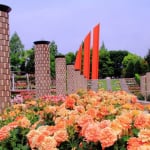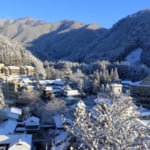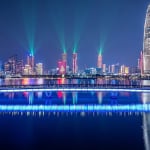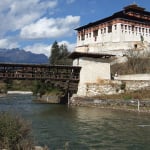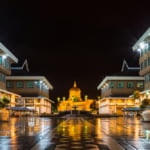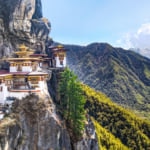Name:Taktshang Monastery
Address:Taktsang trail, Bhutan
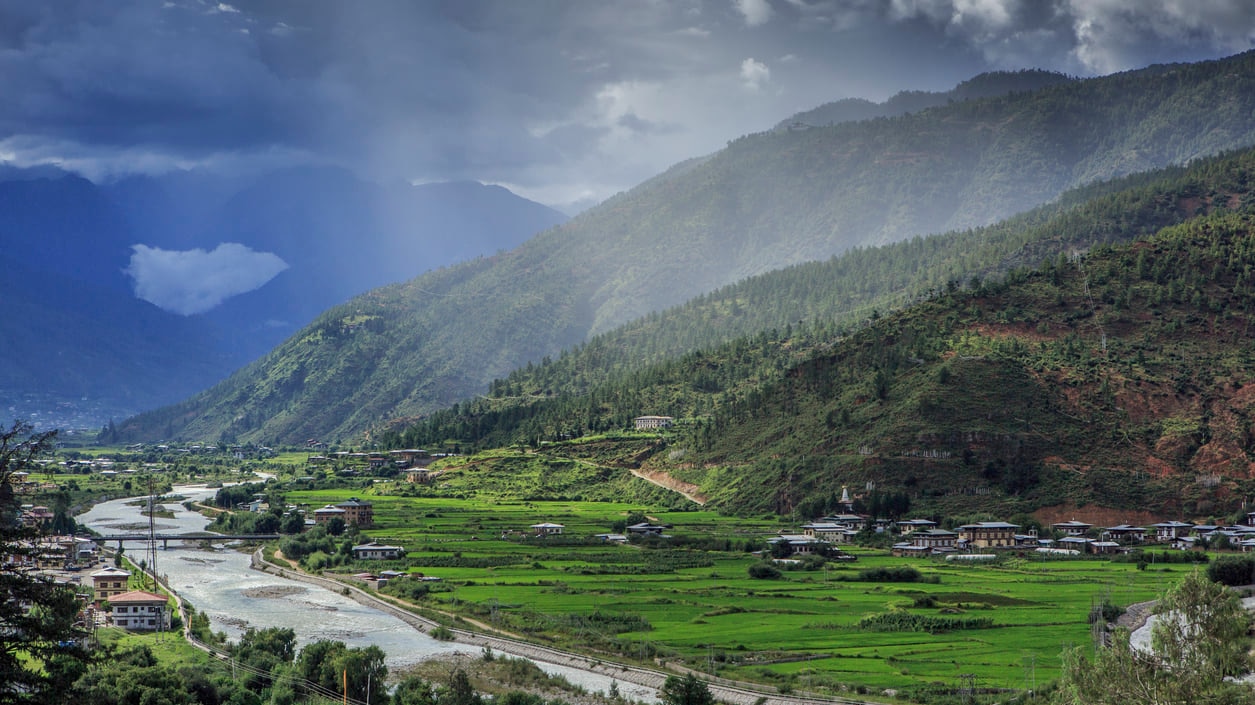
Paro : A Unique Perspective on the Very High Summits of Eastern Bhutan
Paro, located at 2,250 m, is the richest, historically and culturally rich valley in the country. It is full of myths and legends as well as many excellent sites: the Taktshang monastery called "Tiger's Nest", the ruins of Drukgyel Dzong, a fortified monastery that was once a diplomatic post to contain the Tibetan forces. Invasion, the Kyichu Lhakhang, the oldest temple in the country and one of the 108 sacred Lhakhang built by the Buddhist King Srongtsen Gompa of Tibet, or the Rinpung Dzong, ''the fortress of the heaped jewels'' housing today a monastery as well as administrations. Mount Chomolhari (7,300 m) protects this very fertile valley, where you will see many rice terraces, enchanting landscapes and picturesque villages.
table of contents
[x] close
Paro : A Unique Perspective on the Very High Summits of Eastern Bhutan
1. Taktshang Monastery
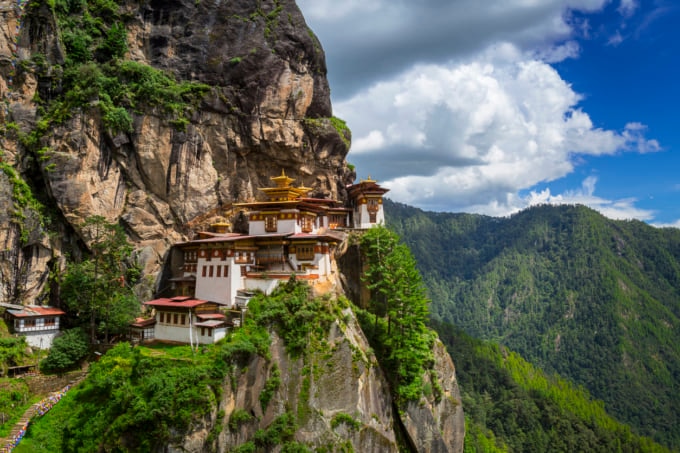
Nestled on dark rocks at more than 3,000 m, the monastery overlooks the Paro Valley. A sacred site and ensemble of temples, it was built in 1692 around Taktshang Senge Samdup cave where Padmasambhava have meditated for three years, three months, three weeks, three days and three hours in the 8th century. Padmasambhava is at the origin of Buddhism in Bhutan. He is the tutelary deity of the country. 300 meters from the monastery, but 800 meters above the precipice, is the hermitage of the "Tiger's Nest". Legend has it that Padmasambhava (Guru Rinpoche), the father of Bhutanese Mahayana Buddhism, came to this place on the back of a tigress and meditated in this monastery. Every three years, a monk isolates himself in this hermitage. A brother brings him food every day at the door.
2. Kyichu Lhakhang
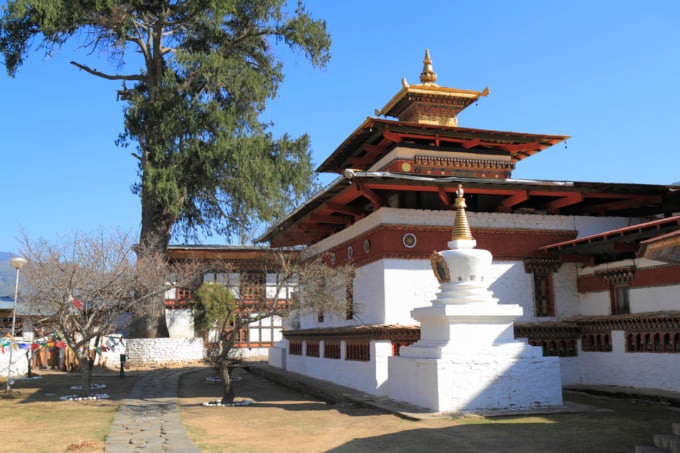
Located about ten kilometers from Paro, the Buddhist temple of Kyichu Lhakhang is one of the oldest temples of Bhutan. Built in the 7th century by the Tibetan king Songsten Gampo, it is one of 108 temples built to master the demon who had seized the Himalayan regions and prevented the development of Buddhism. The Kyichu Lhakhang temple was built on the left ankle of this demon while the Potala in Lhasa is built on its heart. The inner hall contains the largest treasure of the valley, a 7th-century statue of Jowo Sakyamuni. The grooves in the wooden floor testify to the passage of the generations of prostate, the incrustations of turquoise and coral mark the place of the prostration.
Name:Kyichu Lhakhang
Address:Paro, Bhutan
3. The Dzong Ta
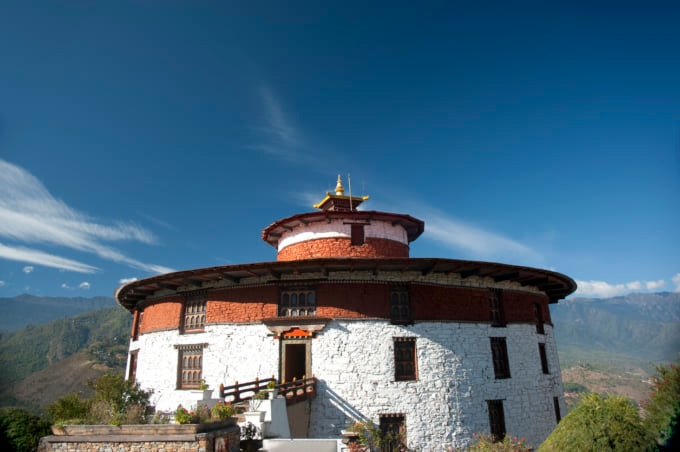
The Dzong Ta, a six-story circular building from the 17th century, was once a watchtower but has since been converted into a National Museum. It contains a magnificent collection of Thangka (painting on canvas characteristic of Tibetan culture), stamps, fabrics, weapons, statues, useful accessories. Closed on Sundays, Mondays and holidays.
Name:The Dzong Ta
Address:Paro, Bhutan
4. Drukgyel
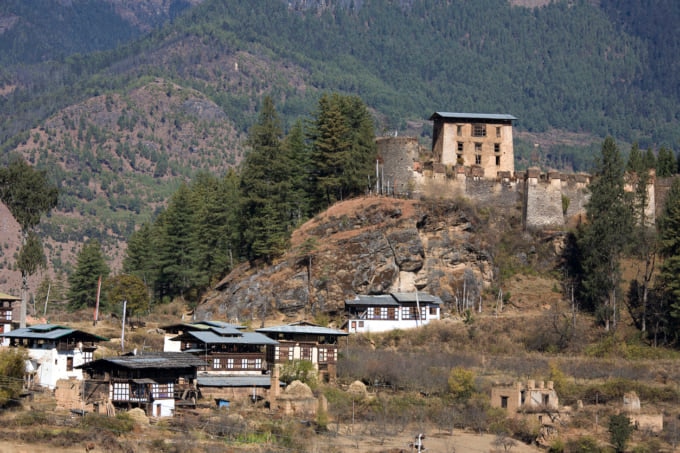
17 km north of the valley stands the ruins of the fortified monastery Drukgyel Dzong. The Dzong was probably built by Tenzin Drukdra in 1649 at the request of Shabdrung Ngawang Namgyal to commemorate Bhutan's victory over the Tibetan invaders. In 1914, when Bhutan first appeared in the media, this Dzong was at its peak and photographed as "Castle in the Sky". In the early 1950s, it was almost completely destroyed by a fire. In clear weather, you will see one of the sacred mountains whose access is to the Mount Jomolhari (7 314 m).
Name:Drukgyel
Address:Paro, Bhutan
5. Dungtse Lhakhang Temple
The temple of Dungtse Lhakhang was built in the 15th century to master the top of the demon's head. It is a temple in the form of chörten (Tibetan form of Buddhist stupa) with three floors. The walls are covered with beautiful paintings. Upstairs you will find representations of Bardo Thödol, the Tibetan Book of the Dead.
Name:Dungtse Lhakhang Temple
Address:Paro, Bhutan
6. Rinpung Dzong
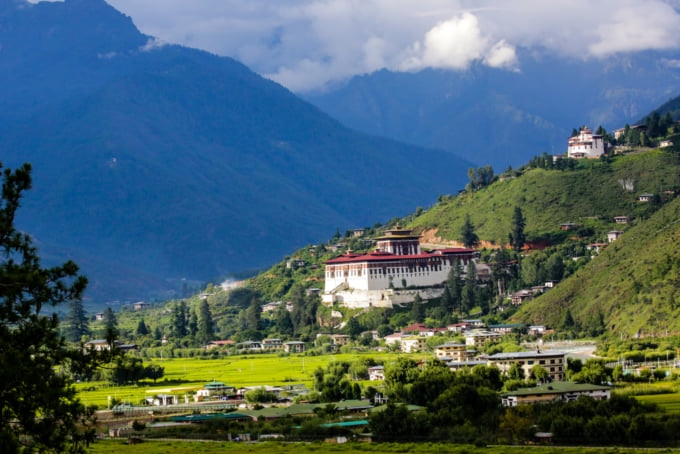
Photo by Pema Gyamtsho/shutterstock.com
Built by Ngawang Namgyal in the 17th century, the "fortress of accumulated jewels" still houses a community of monks. It is accessed by a beautiful wooden footbridge covered with shingles and flanked by two masonry guard towers, which crosses the Paro Chhu. Classical Lamaist frescoes and cosmic mandalas representing the universe, cover the walls. A big annual festival or "tsechu" is held from the eleventh to the fifteenth day of the second month of the traditional Bhutanese lunar calendar (usually March or April). On this occasion, the holy images came out for a procession followed by dances with conventional masks. Every night, a large, 300-year-old sacred banner is unrolled on one of the faces of the building, which the faithful come to touch briefly before dawn. Some scenes from the movie "Little Buddha" were filmed in this Dzong.
Name:Rinpung Dzong
Address:Paro, Bhutan
7. Chele La Pass, Paro
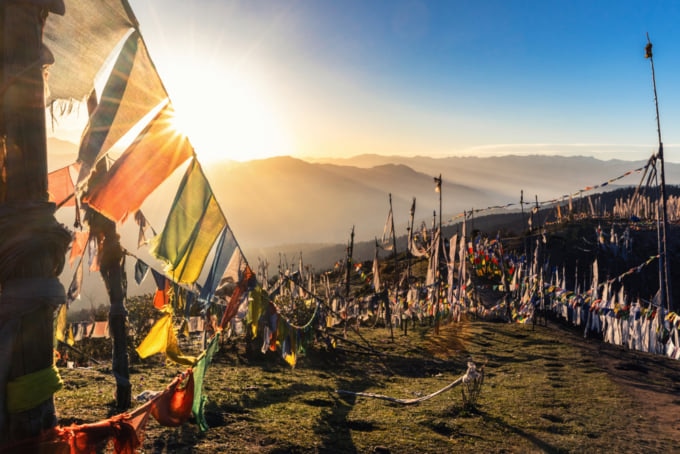
Photo by Nitish Waila/shutterstock.com
Chele-La is a pass located at exactly 3988 meters above sea level. This pass separates the Paro Valley from that of Haa. The Chele-La Pass is a must-do for anyone traveling to Bhutan. The clear view of Mount Jomolhari, Bhutan's iconic mountain (over 7000 meters high) and the Tibetan border will leave you speechless. If you are lucky, you will see another very high summit to the east, the Kangchenjunga, which is more than 8000 meters high!
Name:Chele La Pass, Paro
Address:Paro, Bhutan
◎ Closing
The village of Paro grew up around the dzong in the mid-1980s, and there is little more than the main shopping street. The city is therefore only for its monasteries and its National Museum, housed in the old watchtower, built in 1650. Its visit is a must, and it is an excellent introduction to the cultural wealth of the country. The museum is also considered a temple by the population since almost all objects have a religious symbolism: works of art, costumes, painted banners and fabrics.
RELATED ARTICLES
REGIONS
CATEGORIES
FEATURED ON Bhutan
MOST POPULAR ON Bhutan
-
 1
1Doha: Must-see Attractions in the Capital of Qatar
-
 2
2Toronto: 10 Things to do in this Picturesque Canadian City
-
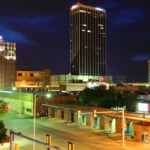 3
3Amarillo: A City Famous for It’s Amazing Canyons, Great History and Music
-
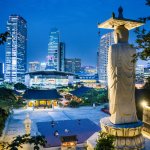 4
4South Korea: Dazzling Scenery, Rich Culture and Fascinating History
-
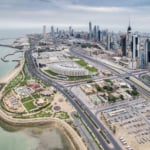 5
5Kuwait: A Country in Middle East Asia Famous for Hot Sand Dunes and Stunning Cityscape

